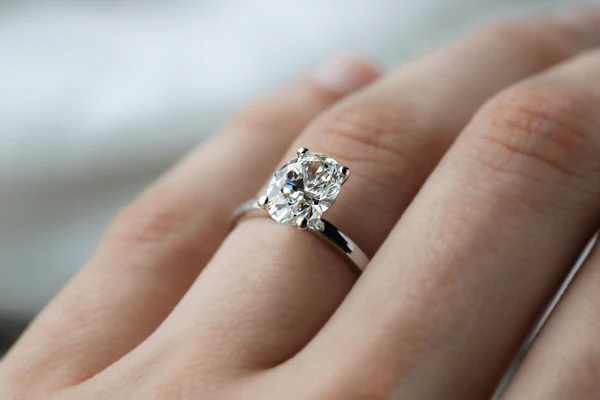
Collecting hair samples from brushes IRB guidelines are important for researchers and medical studies. These guidelines help ensure safety, privacy, and ethical practices when collecting hair samples for testing. Following the rules protects participants and ensures the research is reliable.
When collecting hair samples from brushes, it’s crucial to follow IRB-approved steps. IRB, or Institutional Review Board, guidelines are designed to respect personal rights and keep the process ethical. This article will guide you through the basics of IRB guidelines for hair sample collection while keeping things simple and clear.
What Are IRB Guidelines for Collecting Hair Samples from Brushes?

IRB guidelines are rules that researchers follow to ensure safety and fairness during studies. Collecting hair samples from brushes IRB guidelines are specific steps to collect hair ethically and responsibly. These rules focus on protecting the privacy and rights of individuals whose hair is being collected.
These guidelines explain how to collect hair samples while maintaining respect for participants. For example, researchers must get permission before taking any samples. This consent ensures that participants understand how their hair will be used in the study.
The IRB also sets rules to keep data safe and private. This means that personal information is not shared without permission. Following these guidelines helps ensure that the research is reliable and respectful to everyone involved.
Why IRB Guidelines Are Crucial for Hair Sample Research
IRB guidelines are important because they ensure ethical practices in research. Collecting hair samples from brushes can provide useful data, but the process must be done carefully to avoid harm. These rules ensure fairness and trust between researchers and participants.
Without proper guidelines, participants might feel uncomfortable or unsure about how their samples are used. The IRB ensures transparency, helping people understand the purpose and benefits of the study. This builds trust and encourages more participation.
Hair sample research often involves sensitive personal data, such as genetic information. By following IRB guidelines, researchers ensure that this information is protected. This protects the rights and dignity of the participants while improving the quality of the research.
Step-by-Step Guide to Collecting Hair Samples Safely

Collecting hair samples from brushes IRB guidelines recommend specific steps to follow. These steps ensure that the collection process is safe and ethical for everyone involved.
- Obtain Consent: Before collecting samples, researchers must explain the purpose of the study and get written permission.
- Use Clean Tools: Brushes should be cleaned or sterilized to avoid contamination.
- Label Samples Properly: Ensure that hair samples are labeled without revealing personal details.
- Store Samples Securely: Use safe containers to keep hair samples protected from damage or misuse.
Each step ensures a smooth and ethical process, keeping participants informed and comfortable. Always prioritize respect and safety throughout the procedure.
Ethical Practices for Collecting Hair Samples from Brushes
Researchers must prioritize ethical practices when collecting hair samples. Following IRB guidelines helps ensure that studies respect participants’ rights and well-being.
One key practice is maintaining privacy. Researchers should never link hair samples directly to personal identities. Instead, they use codes or anonymized labels. This protects participants and ensures compliance with privacy laws.
In addition to privacy, researchers should minimize harm by using clean and safe collection methods. Using sterile brushes or gloves prevents contamination and ensures the quality of the samples.
Subheadings for Additional Clarity:
Ensuring Privacy and Consent
- Always explain the study clearly and obtain consent.
- Use coded labels instead of names to protect identities.
Maintaining High Standards for Safety
- Keep tools clean and sterile during the collection process.
- Handle samples carefully to avoid any damage or loss.
Ethical practices make participants feel respected and valued, which leads to better and more reliable research outcomes.
Conclusion

Collecting hair samples from brushes IRB guidelines help researchers do their work safely and respectfully. By following these rules, studies can protect participants’ privacy, ensure ethical practices, and produce reliable results. It is important for researchers to always get consent and handle samples carefully.
When researchers respect these guidelines, they build trust with participants and create high-quality research. These steps make sure everyone feels safe and valued. With the right approach, collecting hair samples can be simple, ethical, and helpful for scientific studies.
FAQs
Q: What are IRB guidelines for collecting hair samples?
A: IRB guidelines are rules to ensure ethical and safe practices during research, including obtaining consent and protecting participants’ privacy.
Q: Why is consent important when collecting hair samples?
A: Consent ensures participants agree to share their hair samples and understand how the samples will be used in the study.
Q: How are hair samples kept private?
A: Researchers use coded labels instead of names and store samples securely to protect participants’ identities.
Q: What tools are needed for collecting hair samples?
A: Clean brushes, gloves, and secure storage containers are essential to avoid contamination and ensure sample safety.
Q: Can hair samples be reused for other studies?
A: Only if the participant has given specific consent for their samples to be used in future research.







